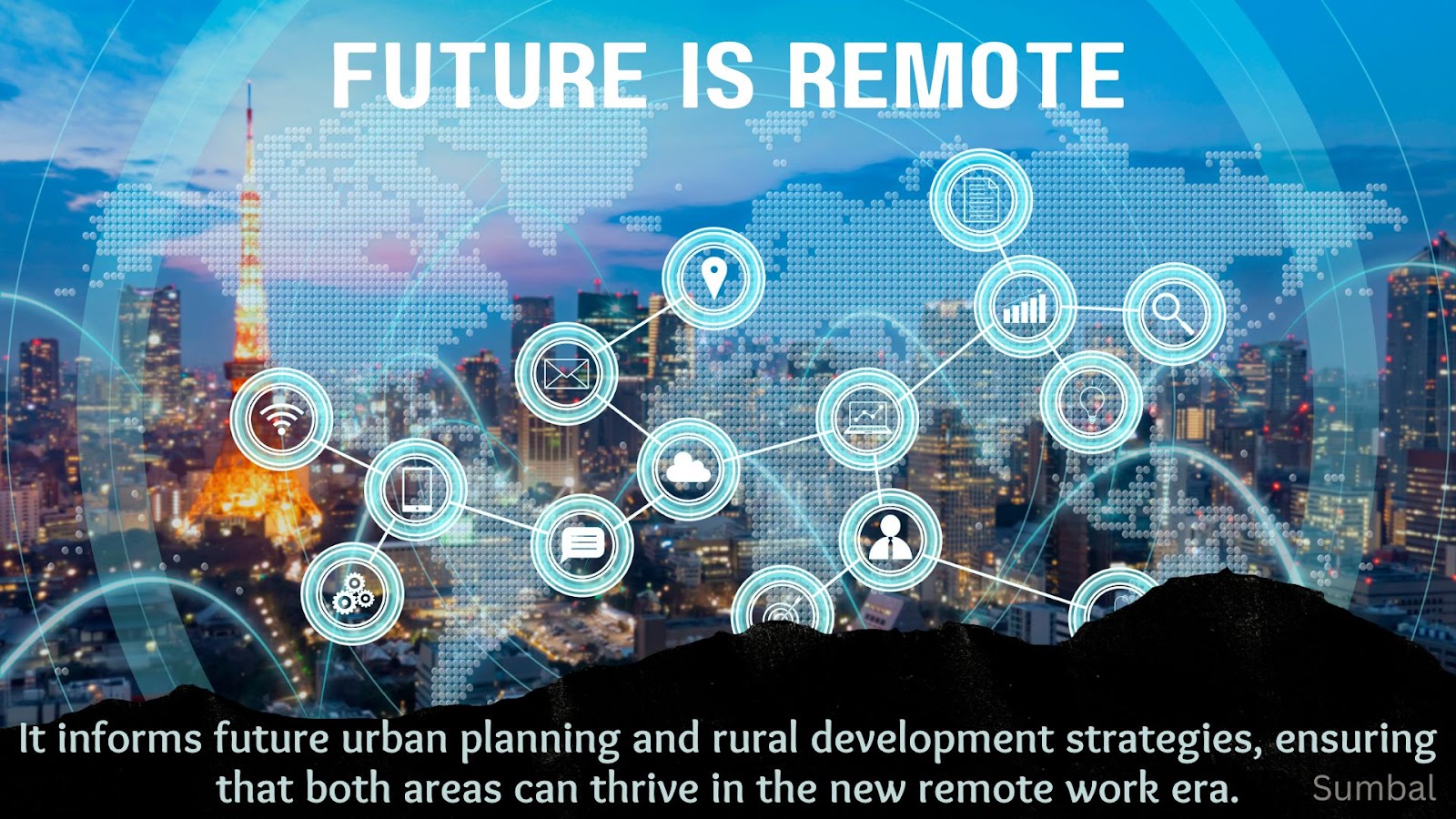Financial Implications of the Shift to Remote Work for Urban and Rural Economies
The increasingly popular phenomenon of remote work has changed work locations and schedules, sparking important financial consequences for cities and villages. As more people are able to work remotely, there is a shift in where people can live, affecting consumers, businesses, local governments, tax revenue, and public services. Today, more and more employees are relocating to reside in rural areas.

Effect on Urban Economies
Economic activity has traditionally been localized in urban areas. Due to the high concentration of jobs, services, and products, people and capital invested in infrastructure and businesses come to cities.
Decline in Commercial Real Estate Demand
Fewer workers are going to city offices, reducing the need for commercial real estate. Offices are experiencing increased empty spaces, and organizations are also questioning the significance of large offices. This decrease in demand may depress property values and rental income, impacting real estate investors and municipal revenues that rely on property taxes.
Loss of Consumer Spending
Most city spending is on daily consumer expenditures by employees in purchasing food, goods, and services. Reduced traffic means that people are spending less money within the community on dining, cafe meetings, and shopping. Consequently, this leads to businesses shuttering, people out of work, and a decrease in local retail sales tax income.
Changes in Infrastructure Funding
This reduces the exploitation of public means of transport since the number of service users and, as a result, the means of transport funding are based on the fees collected. With the increased use of cars, cities must find ways of funding their infrastructure and consider how they will resource other forms of transport.

Opportunities and Challenges for Rural Economies
This shift creates opportunities and challenges for rural economies.
Housing Market Pressures
Recent increases in demand for houses in rural areas have enhanced property values and rents in most places. While this can be advantageous to property owners, it can also increase affordability problems for residents, which sometimes results in a scarcity of houses in the area.
Growth in Local Businesses and Services
With the increase in population in rural areas, businesses might enjoy increased traffic in their sales and services. This can result in job opportunities, local sales, and new business opportunities. Also, greater demand stimulates investment, including in such targets as healthcare, education, and broadband internet, which is crucial for remote working.
Infrastructure and Resource Strain
Rapid population growth may affect the country’s rural infrastructure and resources. Some can hardly meet the needs and wants of people living in rural areas in terms of service delivery, such as roads, utilities, and efficient internet connectivity. This may require local governments to spend their money to upgrade the infrastructure, which could be scarce.

Fiscal Implications for Local Governments
Working from home also applies to local government revenues and expenditures. Urban areas may experience low or no property taxes due to reduced property values, business closures, and consumer spending. On the other hand, some benefits could be adopted by rural centers, where higher property values and new residents would mean more tax revenues. However, with these exercises, such funds may have to be invested in developing more infrastructure to address the increased population size.
(Writer:Tick)





